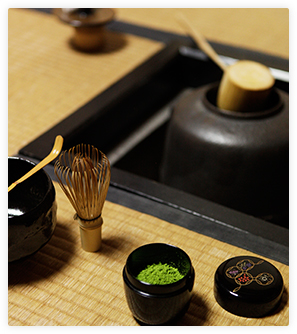WHAT IS MATCHA

Did you know that all tea comes from the same species of plant called the Camellia Sinensis?
Yes, that includes: black tea, white tea, oolong tea, and green tea. We must show our respect to this special plant because without this plant there wouldn't be any tea in this world. Matcha literally means- powdered green tea leaves. Matcha is a type of green tea that requires a special process from farming to cup.
Here is a simplified process on how Matcha is made.
Farming- The process of growing the plants and keeping the plants and soil well nourished and in good health.
Shading- About 20-30 days before the harvest, Matcha leaves are shaded to cut out the direct sunlight. This gives the plants high levels of Theanine, the amino acid that gives Matcha its flavor and vivid green color.
Low heat steaming- Matcha is steamed for a short amount of time to prevent the tea leaves from oxidizing.
This a special part of the Matcha process that differs from other teas around the world. This allows Matcha to keep the color, smell, and the plants nutritional value intact.
Cool down phase- After steaming the leaves must be cooled by a large amount of cold air. This high powered cooling technique is how the leaves keep their beautiful color and pristine smell.
Drying phase- The leaves are spread out evenly on a conveyer and ran through a hot pit and dried out. People say that this is the step that gives Matcha its distinctive taste.
Sorting phase- After the drying phase, the tea leaves are cut, sorted, and deveined. This step is done usually done by hand to make sure the best quality tea leaves are given to customers.
Tencha- These are the tea leaves that have been shaded, steamed, and dried. Tencha is the final process before milling.
Milling- High quality Matcha will use a Mikage granite Stone to grind Matcha into powdered form. This stone uses a low heat but can only produce about 30-40g of Matcha per hour.
As you have read above, it takes a full team of talented tea farmers to get Matcha from the garden to tea bowl. What's more impressive is that fact that organic Matcha is much more difficult to harvest than non-organic. Organic Matcha and non-organic Matcha is grown in the same way but the organic farmers must follow strict guidelines enforced by the USDA certifiers. Obviously, organic Matcha farms can't use pesticides or chemical fertilizers. What most don't understand is that Matcha is quite different from organic to non-organic in all aspects of color, smell, and taste. Normally organic foods taste so much better but Matcha goes against this norm and it's quite the opposite.
When Matcha goes through the shading process for about 3 weeks before harvest time to give Matcha is bright green vivid color, the soil is where Matcha must get its nutrition from. Because of the strict regulations of fertilizers and chemicals it's very hard for organic Matcha to get all of its healthy nutrients needed during the sun shading process. This usually gives organic Matcha a slightly less amazing color, smell and taste. Although organic Matcha and non-organic Matcha farmers use different fertilizers to harvest Matcha. The actual nutritional value between both types of Matcha are quite small.
Organic Matcha farms must be located in an area that has a colder temperature throughout the year. Now, most organic farms are located high in the mountains away from cities, people, smog, and air pollution. In fact, you cannot have an organic tea farm next to a non-organic tea farm. This is because, the wind may blow chemicals and other non-organic items onto the organic harvests.
Fortunately, Matcha farmers started growing organic Matcha about 40 years ago. Now farmers are producing better organic Matcha every year. Please remember being organic goes beyond just the tea farm itself. To be certified organic you must follow all aspects from farming, storage, processing steps, packaging and labeling, and shipping to the final destination. Organic Matcha is truly an art, and I hope Tai-an Tea Co. can show the world the respect that the tea masters and farmers deserve.
Matcha is also used in the traditional Japanese tea ceremony called "Chado" or "Way of Tea". Matcha has been such an important aspect in Japanese culture since the 16th century. The same philosophy and principles of the Japanese tea ceremony are still used in present day Japan.


